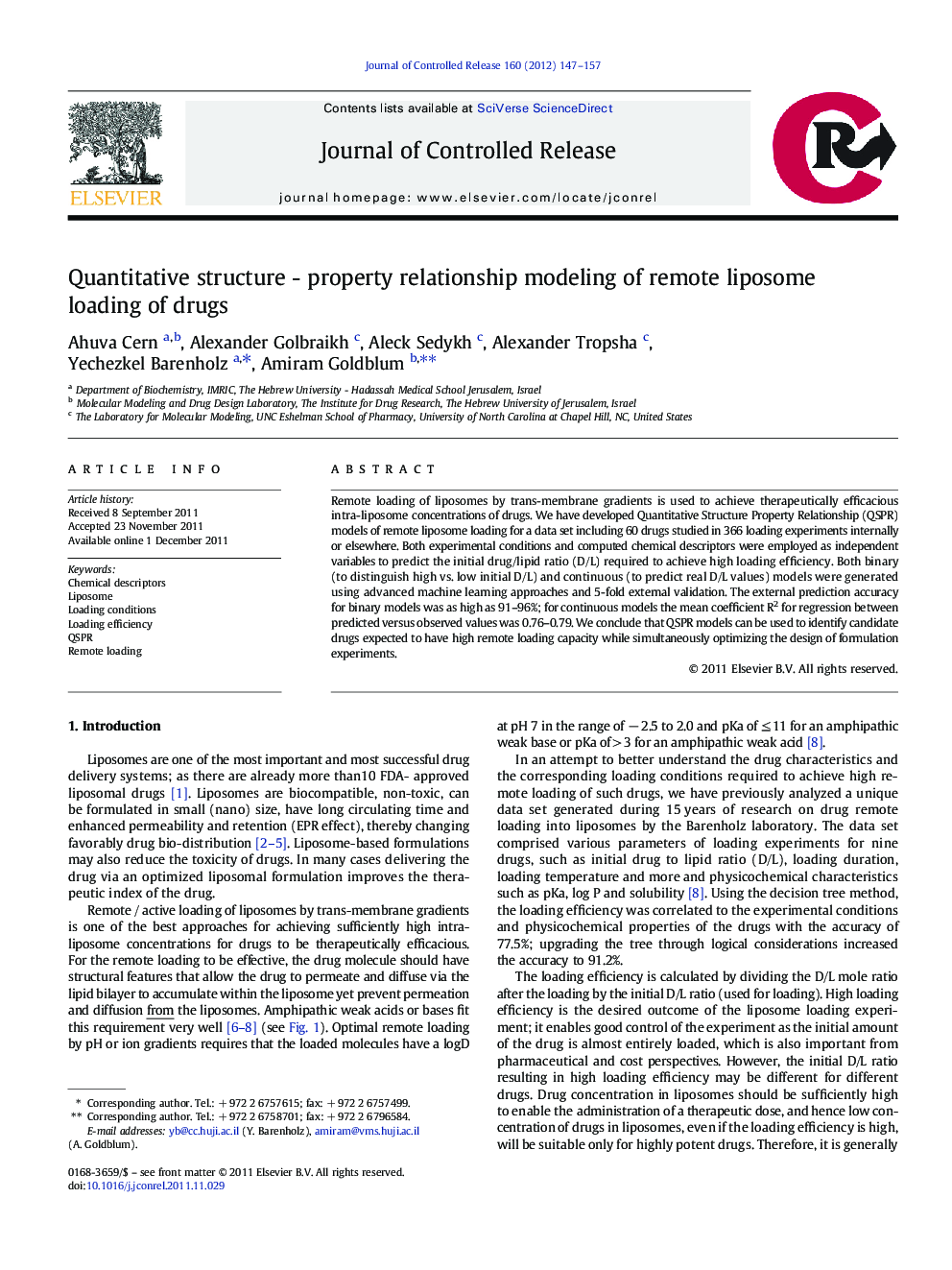| Article ID | Journal | Published Year | Pages | File Type |
|---|---|---|---|---|
| 1424609 | Journal of Controlled Release | 2012 | 11 Pages |
Remote loading of liposomes by trans-membrane gradients is used to achieve therapeutically efficacious intra-liposome concentrations of drugs. We have developed Quantitative Structure Property Relationship (QSPR) models of remote liposome loading for a data set including 60 drugs studied in 366 loading experiments internally or elsewhere. Both experimental conditions and computed chemical descriptors were employed as independent variables to predict the initial drug/lipid ratio (D/L) required to achieve high loading efficiency. Both binary (to distinguish high vs. low initial D/L) and continuous (to predict real D/L values) models were generated using advanced machine learning approaches and 5-fold external validation. The external prediction accuracy for binary models was as high as 91–96%; for continuous models the mean coefficient R2 for regression between predicted versus observed values was 0.76–0.79. We conclude that QSPR models can be used to identify candidate drugs expected to have high remote loading capacity while simultaneously optimizing the design of formulation experiments.
Graphical abstractThe figure presents the distribution between all instances in the external test sets having high loading efficiency using Iterative Stochastic Elimination (ISE) index. ISE is one of the classification methods used in the study.Figure optionsDownload full-size imageDownload high-quality image (105 K)Download as PowerPoint slide
